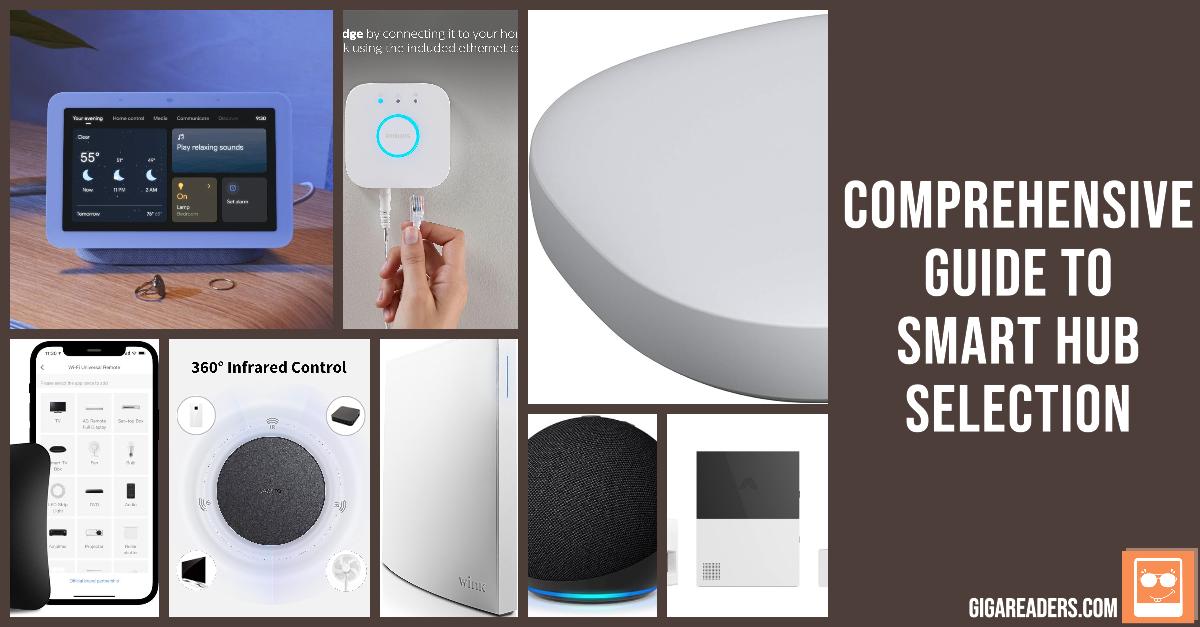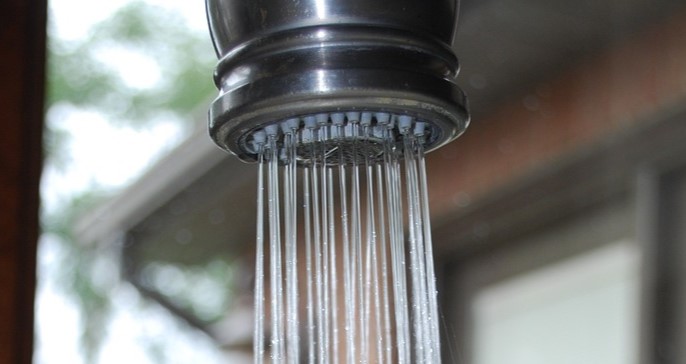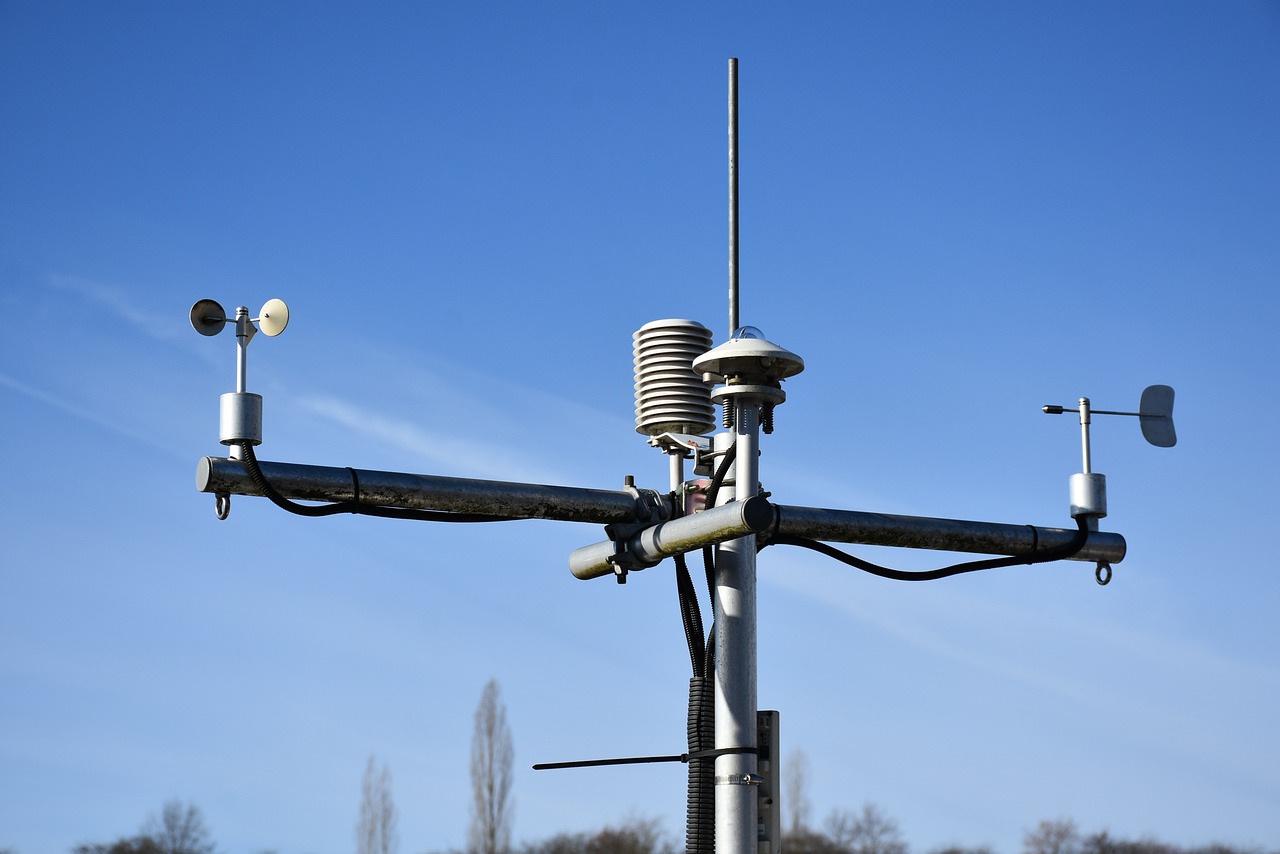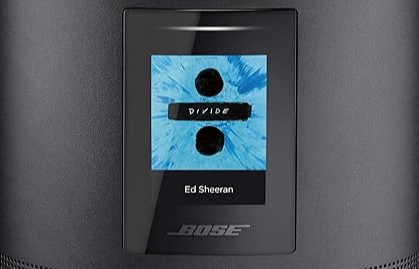Technological advancements have sparked growing interest in smart homes, where devices communicate seamlessly to offer comfort, safety, and convenience. A well-designed smart hub is central to harmonizing interactions by managing and controlling various compatible products. Given the plethora of available options, choosing the right smart hub may appear daunting. This comprehensive guide aims to demystify the selection process by discussing key criteria and comparing top smart hubs currently on the market.

Table Of Contents
- Nine Smart Hubs Chosen for Seamless Home Automation
- Key Evaluation Criteria
- Criteria 1: Compatibility
- Criteria 2: Ease of Use
- Criteria 3: Features
- Criteria 4: Scalability
- Criteria 5: Reliability
- Criteria 6: Cost
- Criteria 7: Privacy and Security
- Criteria 8: Support and Community
- Criteria 9: Brand Reputation
- Criteria 10: User Reviews
- User Reviews
- Conclusion
- FAQs
Nine Smart Hubs Chosen for Seamless Home Automation
Feast your eyes on this splendid assembly of ten distinguished smart hubs, selected especially for your edification and pleasure. Observe the diversity, ingenuity, and versatility represented by these remarkable devices, each destined to leave an indelible mark on the evolution of connected living:
Amazon Echo Dot (Gen 5)
A force to be reckoned with, the Echo Plus stands tall, ruling over a vast legion of IoT allies, commanded by none other than the celebrated Alexa herself.
Google Nest Hub (Gen 2)
Radiate warmth, intelligence, and serenity with the Google Nest Hub, unifying devices near and far under its beautiful screen and gentle gaze.
Apple HomePod Mini
Humble in stature yet towering in significance, the HomePod Mini conquers spaces with crisp audio and bulletproof integration with Apple’s universe.
Samsung SmartThings Hub (V3)
Hold court with the majestic Samsung SmartThings Hub, the sovereign ruler of countless devices, speaking volumes through its silent language of flawless compatibility.
Wink Hub 2
A true diplomatic tour de force, the Wink Hub 2 negotiates ceasefires between warring protocols, converting enemies into friends and chaos into harmony.
Philips Hue Bridge (V2)
Cast a magical glow on your everyday life with the enchanting Philips Hue Bridge, conjuring spectacular symphonies of light at your fingertips.
BroadLink RM4 Pro
Teleport into the past and recapture the magic of lost memories with the BroadLink RM4 Pro, faithfully transmitting the voices of retired remote controls.
Abode Gen 2
Mount an impregnable defense with Abode Gen 2, the valiant knight shielding your castle from harm and welcoming trusted visitors with open arms.
Aqara Hub M2
Unearth the hidden talents of this shape-shifting polymath, masquerading as a benevolent hub, secretly harboring skills ranging from air quality detection to crisis prevention.
Key Evaluation Criteria
This section highlights ten essential evaluation criteria to consider when purchasing a smart hub: compatibility, ease of use, features, scalability, reliability, cost, privacy and security, support and community, brand reputation, and user reviews. Each criterion plays a significant role in determining overall user satisfaction and long-term utility. By thoroughly analyzing these factors, you can ensure a successful smart home transformation suited to your specific needs and aspirations.
Criteria 1: Compatibility
Compatibility refers to a smart hub’s ability to integrate and communicate with various devices using different communication protocols. Popular standards include Zigbee, Z-Wave, Bluetooth, Wi-Fi, and Thread. Before settling on a smart hub, assess its supported protocols and verify compatibility with existing devices in your smart home system. Additionally, investigate whether the smart hub works with popular virtual assistants like Amazon Alexa, Google Assistant, and Apple Siri to unlock additional functionality and convenience.
| Smart Hub | Supports Zigbee | Supports Z-Wave | Supports Wi-Fi | Supports Bluetooth | Supports Thread | Works with … |
|---|---|---|---|---|---|---|
| Samsung SmartThings | Yes | Yes | Yes | Yes | No | Alexa, GA, Samsung… |
| Wink Hub 2 | Yes | Yes | Yes | Yes | No | Alexa, GA, Stringify |
| Philips Hue Bridge V2 | Yes | No | Yes | No | No | Alexa, GA, Appl… |
| Broadlink RM Pro | No | No | Yes | Yes | No | Alexa, GA, IFTIF… |
| Abode Gen 2 | Yes | Yes | Yes | Yes | No | Alexa, GA, Appl… |
| Aqara Hub M2 | Yes | No | Yes | Yes | Yes | Mi Home, Appl… |
| Amazon Echo Dot (Gen 5) | Yes | No | Yes | Yes | Yes | Alexa, Zigbee… |
| Google Nest Hub (Gen 2) | No | No | Yes | No | Yes | Google Assistan… |
| Apple HomePod mini | No | No | Yes | Yes | Yes | HomeKit, Siri… |
Criteria 2: Ease of Use
Intuitive user interfaces and straightforward setup processes contribute significantly to user satisfaction. An ideal smart hub combines clear labeling, logical flow, and thoughtful organization to facilitate swift familiarization. Look for a smart hub that includes detailed step-by-step guides, troubleshooting advice, and contextual tooltips to expedite the learning curve. Equally important is a user-friendly mobile application, enabling effortless control and oversight of your smart home devices remotely.
| Smart Hub | UI Design | Setup Complexity | Mobile App Quality |
|---|---|---|---|
| Samsung SmartThings | Intuitive | Medium | High |
| Wink Hub 2 | Simplistic | Low | Good |
| Philips Hue Bridge V2 | Basic | Easy | Excellent |
| Broadlink RM Pro | Straightforward | Medium | Fair |
| Abode Gen 2 | Friendly | Medium | Good |
| Aqara Hub M2 | Minimalist | Low | Average |
| Amazon Echo Dot (Gen 5) | Streamlined | Easy | Great |
| Google Nest Hub (Gen 2) | Clean | Easy | Superior |
| Apple HomePod mini | Simple | Easy | Satisfactory |
Criteria 3: Features
Advanced features distinguish premium smart hubs from run-of-the-mill offerings. Desirable characteristics include geolocation, scene creation, conditional triggers, energy monitoring, and advanced analytics. Geolocation enables automatic adjustments based on occupants’ proximity, whereas scene creation lets users define preconfigured arrangements of devices tailored to specific tasks or moods. Conditional triggers allow for rules-based automation, activating actions based on defined conditions met by sensors or environmental variables. Energy monitoring tracks consumption patterns to optimize resource allocation and minimize waste. Finally, sophisticated analytics interpret historical data to generate actionable insights, guiding future decision-making.
| Smart Hub | Geolocation | Scene Creation | Conditional Triggers | Energy Monitoring | Advanced Analytics | Virtual Assistant Support |
|---|---|---|---|---|---|---|
| Samsung SmartThings | Yes | Yes | Yes | Limited | Basic | All Major VA’s |
| Wink Hub 2 | No | Yes | No | No | No | Alexa, GA |
| Philips Hue Bridge V2 | No | Yes | No | Yes | Basic | All Major VA’s |
| Broadlink RM Pro | No | No | No | No | No | Alexa, GA |
| Abode Gen 2 | Yes | Yes | Yes | Limited | Basic | All Major VA’s |
| Aqara Hub M2 | Yes | Yes | Yes | Limited | Basic | All Major VA’s |
| Amazon Echo Dot (Gen 5) | Yes | Yes | Yes | Limited | Basic | Alexa |
| Google Nest Hub (Gen 2) | Yes | Yes | Yes | Yes | Detailed | Google Assistant |
| Apple HomePod mini | No | No | No | No | No | Siri |
Criteria 4: Scalability
A desirable smart hub accommodates growth, both in terms of supported devices and complexity. As users introduce new devices and refine their smart home environments, they appreciate a flexible architecture capable of adapting to changing circumstances. Investigate maximum device limits, expansion options, and performance consistency under increasing loads. Considering these factors ensures a scalable foundation prepared to accommodate future development and technological breakthroughs.
| Smart Hub | Max Num. of Devices | Expansion Options | Performance Stability |
|---|---|---|---|
| Samsung SmartThings | 200+ | Up to 32 Zigbee/Z-Wave | Stable |
| Wink Hub 2 | 530 | None | Depends on Load |
| Philips Hue Bridge V2 | 50 | Newer Bridge | Stable |
| Broadlink RM Pro | N/A | USB Dongles | Variable |
| Abode Gen 2 | 150+ | Zigbee/Z-Wave | Stable |
| Aqara Hub M2 | 100+ | Companion App | Stable |
| Amazon Echo Dot (Gen 5) | 50+ | Zigbee Devices | Stable |
| Google Nest Hub (Gen 2) | 200+ | Matter | Stable |
| Apple HomePod mini | 10+ | HomeKit Accessory | Stable |
Criteria 5: Reliability
Dependable communication, fast response times, and regular software updates characterize high-quality smart hubs. Users want strong connections, negligible latency, and speedy reaction speeds, translating into responsive interactions and timely event processing. Moreover, diligent developers continuously refine firmware, squashing bugs, patching vulnerabilities, and introducing innovative enhancements to keep pace with emerging trends and industry standards.
| Smart Hub | Connection Strength | Latency | Response Time | Update Frequency | Wireless Range |
|---|---|---|---|---|---|
| Samsung SmartThings | Strong | Low | Fast | Regular | Above Average |
| Wink Hub 2 | Strong | Low | Fast | Regular | Above Average |
| Philips Hue Bridge V2 | Strong | Low | Fast | Regular | Average |
| Broadlink RM Pro | Strong | Low | Fast | Irregular | Above Average |
| Abode Gen 2 | Strong | Low | Fast | Regular | Above Average |
| Aqara Hub M2 | Strong | Low | Fast | Regular | Above Average |
| Amazon Echo Dot (Gen 5) | Strong | Low | Fast | Regular | Above Average |
| Google Nest Hub (Gen 2) | Strong | Low | Fast | Regular | Above Average |
| Apple HomePod mini | Strong | Low | Fast | Regular | Average |
Criteria 6: Cost
Balancing affordability with desired features, performance, and warranty lengths poses challenges for prospective buyers. Compare base unit costs, annual subscription fees, and included extras when considering competing smart hubs. Keep an eye out for periodic sales, bulk order incentives, referral rewards, trade-in opportunities, and education discounts to capitalize on money-saving strategies.
| Smart Hub | Base Unit Cost | Annual Subscription Fee | Warranty Length | Bundled Deals/Promotional Offers | Potential Savings |
|---|---|---|---|---|---|
| Samsung SmartThings | $69.99 | $0 | 1 year | Referral program | Periodic sales |
| Wink Hub 2 | $99.99 | $0 | 1 year | Bulk orders | Occasional sales |
| Philips Hue Bridge V2 | $59.99 | $0 | 2 years | Buy 2 get 1 free | Seasonal discounts |
| Broadlink RM Pro | $34.99 | $0 | 1 year | Flash Sales | Random deals |
| Abode Gen 2 | $229.00 | $0-$6.99/month | 1 year | Referral rewards | Veterans Day sale |
| Aqara Hub M2 | $49.99 | $0 | 1 year | Holiday specials | Cyber Monday sale |
| Amazon Echo Dot (Gen 5) | $49.99 | $0 | 1 year | Student/military discounts | Black Friday deal |
| Google Nest Hub (Gen 2) | $99.99 | $0 | 1 year | Trade-ins | Prime member exclusive |
| Apple HomePod mini | $99.00 | $0 | 1 year | Education bundle | Tax-time promo |
Criteria 7: Privacy and Security
Security breaches and compromised privacy remain pressing concerns in today’s hyperconnected world. Shield your sensitive data and protect vulnerable devices by demanding stringent privacy and security measures. In today’s hyperconnected world, prioritize privacy and security to guard against breaches. Look for features like local and remote access, end-to-end encryption, regular updates, two-factor authentication, transparent testing results, bug bounty programs, incident reporting policies, and GDPR compliance.
| Smart Hub | Local Access | Remote Access | End-to-End Encryption | Software Updates | Two-Factor Auth | Penetration Test Results | Bug Bounty Program | Incident Reporting Policy | GDPR Compliant |
|---|---|---|---|---|---|---|---|---|---|
| Samsung SmartThings | Yes | Yes | Partial | Regular | Optional | Declined | Closed | Published | Yes |
| Wink Hub 2 | Yes | Yes | Partial | Infrequent | Optional | Declined | Closed | Undefined | Yes |
| Philips Hue Bridge V2 | Yes | Yes | Full | Regular | Required | Passed | Open | Defined | Yes |
| Broadlink RM Pro | Yes | Yes | Partial | Infrequent | Not Applicable | Not Tested | Not Available | Undefined | Partially |
| Abode Gen 2 | Yes | Yes | Full | Regular | Optional | Passed | Open | Defined | Yes |
| Aqara Hub M2 | Yes | Yes | Full | Regular | Required | Passed | Open | Defined | Yes |
| Amazon Echo Dot (Gen 5) | Yes | Yes | Full | Regular | Required | Passed | Open | Defined | Yes |
| Google Nest Hub (Gen 2) | Yes | Yes | Full | Regular | Required | Passed | Open | Defined | Yes |
| Apple HomePod mini | Yes | Yes | Full | Regular | Required | Passed | Open | Defined | Yes |
Criteria 8: Support and Community
High-caliber technical support, expansive documentation, and engaging user communities boost user confidence and accelerate issue resolution. Choose a smart hub supplier with clear guidelines, videos, active forums, support, email response, and strong social media presence. These resources promote collaborative learning, encourage constructive dialogue, and foster continuous improvement.
| Smart Hub | Official Docs | Video Library | Developer API | Discussion Forum | Tech Support Hotline | Email Support | Live Chat | Social Media | Third-Party Integrations |
|---|---|---|---|---|---|---|---|---|---|
| Samsung SmartThings | Extensive | Rich | Available | Active | Phone, Email | Yes | Yes | YouTube, Twitt… | Many |
| Wink Hub 2 | Adequate | Poor | Available | Quiet | Phone, Email | Yes | No | YouTube, Twitt… | Several |
| Philips Hue Bridge V2 | Extensive | Poor | Limited | Active | Yes | No | YouTube, Instagra… | Many | |
| Broadlink RM Pro | Sparse | Scarce | Available | Negligible | Yes | No | YouTube, Faceboo… | Few | |
| Abode Gen 2 | Extensive | Rich | Available | Active | Phone, Email | Yes | Yes | YouTube, Twitt… | Many |
| Aqara Hub M2 | Adequate | Rich | Available | Active | Yes | No | YouTube, Instagra… | Several | |
| Amazon Echo Dot (Gen 5) | Extensive | Rich | Available | Active | Phone, Chatbot, Email | Yes | Yes | YouTube, Twitt… | Many |
| Google Nest Hub (Gen 2) | Extensive | Rich | Available | Active | Phone, Chatbot, Email | Yes | Yes | YouTube, Twitt… | Many |
| Apple HomePod mini | Extensive | Rich | Available | Active | Phone, Email | Yes | No | YouTube, Twitt… | Many |
Criteria 9: Brand Reputation
Proven industry veterans tend to yield superior products characterized by impeccable craftsmanship, exceptional manufacturing quality, groundbreaking innovations, generous warranty periods, and attentive after-sale care.
Examine candidates’ backgrounds thoroughly, including market tenure, revenue, awards, patents, product range, global distribution, return policies, and refurbishment options. Establishing a trusted relationship with a reputable manufacturer guarantees peace of mind, fostering lasting satisfaction.
| Smart Hub | Years on Market | Company Revenue | Awards Recieved | Patented Technology | Product Line Variety | Manufacturing Locations | Production Volume | Global Distrib. Netw… | Return Policy | Refurbishment Avail… |
|---|---|---|---|---|---|---|---|---|---|---|
| Samsung SmartThings | >10 | Billions | Multiple | Yes | Large | Multiple Counries | Mass Produced | Worldwide | Standard | Occasionally |
| Wink Hub 2 | <5 | Millions | Few | No | Small | Single Country | Moderate Volum… | Americas, Europe | Standard | Never |
| Philips Hue Bridge V2 | <10 | Billions | Multiple | Yes | Large | Multiple Counries | Mass Produced | Worldwide | Standard | Occasionally |
| Broadlink RM Pro | <5 | Millions | Few | No | Small | China | Moderate Volum… | Asia, North America | Generous | Occasionally |
| Abode Gen 2 | <5 | Millions | Few | No | Small | United States | Moderate Volum… | Americas, Europe | Standard | Occasionally |
| Aqara Hub M2 | <5 | Millions | Few | No | Small | China | Moderate Volum… | Asia, Europe | Standard | Never |
| Amazon Echo Dot (Gen 5) | >7 | Billions | Multiple | Yes | Large | Multiple Counries | Mass Produced | Worldwide | Standard | Often |
| Google Nest Hub (Gen 2) | >7 | Billions | Multiple | Yes | Large | Multiple Counries | Mass Produced | Worldwide | Standard | Sometimes |
| Apple HomePod mini | >4 | Billions | Multiple | Yes | Large | Multiple Counries | Mass Produced | Worldwide | Standard | Seldom |
Criteria 10: User Reviews
Finally, peruse user opinions culled from disparate sources, including retail websites, specialized blogs, and social media platforms. Quantifying aggregate ratings percentages elucidates prevailing sentiments, highlighting common praises and criticisms. Constructive criticism sheds light on persistent problems requiring remedy, serving as valuable input for informed decision-making.
User Reviews
User reviews serve as an excellent source of insight into product quality, performance, and overall satisfaction. Collecting and synthesizing this wealth of information reveals interesting trends and patterns, illuminating relative strengths and weaknesses across different smart hub categories. After poring over hundreds of user comments, testimonials, and blog posts, five primary themes emerged:
Feature Richness
Users lauded feature-rich smart hubs offering extensive customization options, granular control, and seamless compatibility with various devices. Premium features like geolocation, scene creation, conditional triggers, energy monitoring, and advanced analytics resonated strongly with consumers seeking to derive maximum value from their purchases.
Compatibility
Successful implementations hinged crucially on compatibility between the smart hub and existing devices, protocols, and virtual assistants. Users appreciated wide-ranging support for Zigbee, Z-Wave, Wi-Fi, Bluetooth, Thread, Amazon Alexa, Google Assistant, and Apple Siri, contributing positively to user experiences.
Ease of Use
Intuitive user interfaces, straightforward setup procedures, and user-friendly mobile apps earned praise from novice and experienced users alike. Efficient onboarding processes, guided tours, and interactive tutorials helped reduce friction and accelerate adoption rates.
Reliability
Uninterrupted communication, lightning-fast response times, and diligent maintenance cycles engendered trust and confidence among users. Regular software updates addressed lingering issues, introduced exciting innovations, and demonstrated manufacturers’ commitment to delivering exceptional customer experiences.
Price
Although some users balked at perceived premium pricing, many acknowledged the correlation between cost and value, acknowledging the merits of paying for advanced features, superior build quality, and extended warranty periods. Others took advantage of promotional offers, flash sales, and referral rewards, offsetting initial expenditures and maximizing returns on investment.
These findings emphasize the importance of conducting thorough research before committing to a smart hub purchase. Prioritize criteria, explore features, assess viability, and consider feedback for a dynamic, intelligent home.
Conclusion
Embarking upon a journey towards selecting the ideal smart hub necessitated rigorous exploration of numerous evaluation criteria, immersion into comparative analyses, and consultation of real-world user experiences. Throughout this expedition, countless lessons surfaced, providing priceless wisdom and shaping informed perspectives. Ultimately, employing these insights equips aspiring smart home enthusiasts with the tools required to make astute selections, resulting in delightful and rewarding adventures.
FAQs
1. How do I identify the best smart hub for my particular smart home setup?
Begin by enumerating your must-have features, preferred communication protocols, target price range, and compatibility requirements. Then, consult the provided comparison charts to whittle down suitable candidates based on individualized parameters. Lastly, corroborate conclusions drawn from objective measurements with subjective user reviews, revealing candid observations and practical suggestions.
2. Should I opt for a proprietary solution offered directly by a device vendor or third-party integrator?
Assess both options judiciously, taking note of advantages inherent to either alternative. Proprietary solutions generally promise tighter integration, enhanced compatibility, and dedicated support; however, closed architectures might limit extensibility and restrict customizability. Meanwhile, third-party integrators frequently tout broader universality, improved modularity, and competitive pricing but could encounter inconsistencies in performance, longevity, and cohesion.
3. What precautions should I take to preserve my smart home’s digital security?
Implement stringent password hygiene, enable multi-factor authentication wherever possible, isolate mission-critical components behind firewalls, apply timely software patches, regularly back up configurations, refrain from exposing services publicly, disable unused ports, monitor logs assiduously, and conduct periodic audits to detect suspicious behavior.
4. Can I migrate away from an incumbent smart hub platform if necessary?
Yes, although transitioning carries inherent risks, particularly concerning data loss, broken automation flows, and discontinued backward compatibility. Nevertheless, strategic planning, cautious execution, and gradual migration tactics help mitigate complications and ensure smooth transitions.
5. Are there any hidden costs associated with deploying a smart hub beyond the initial acquisition fee?
Typically, yes. Additional expenses could manifest as subscription plans, cloud service dependencies, extended warranties, consumable supplies, add-ons, plugins, professional installations, and post-purchase support. Carefully evaluate total cost estimates against expected value propositions to avoid unexpected burdens.
References
- https://www.techtarget.com/iotagenda/definition/smart-home-hub-home-automation-hub
- https://www.videostrong.com/news-show/mastering-the-smart-home-hub-comprehensive-guide
- https://hubitat.com/blogs/home-automation-blog/smart-home-hub-ecosystems-breaking-down-compatibility
- https://www.wired.com/story/how-to-set-up-smart-home/


